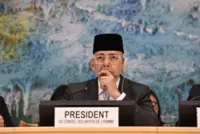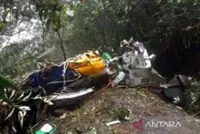Painful loss: A file photo on Feb 11 showing Safitri Puspa Rani holding a picture frame bearing the image of her late son Panghegar Bhumi as she cries while explaining her son’s condition before he died. Bhumi died from fatal acute kidney injury – days after a doctor prescribed him cough syrup that has been linked to more than 200 child deaths in Indonesia, according to the country’s health ministry. —AFP
Indonesian court documents have revealed for the first time the chain of events that led to toxic ingredients being used in cough syrup that was among the products blamed for the deaths of more than 200 children in the country last year.
According to the previously unreported 373-page court ruling in a criminal case of officials at Indonesia drugmaker Afi Farma, the seeds of the tragedy were sown in 2021 during a global shortage of pharmaceutical grade propylene gylcol (PG), a key base for syrupy medicines.
Already a subscriber? Log in
Save 30% OFF The Star Digital Access
Cancel anytime. Ad-free. Unlimited access with perks.





